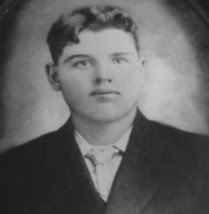The Social Consequences of Mass Irish Emigration
(Fronm the website http://www.irish-genealogy-toolkit.com/Irish-emigration.html )
Because the phenomenon of mass Irish emigration was largely prompted by the terrible catastrophe of the Great Hunger (the 'famine' of the late 1840s), the consequences of one cannot be separated from the other.
Having been removed from their small strips of land through failure to pay rent, starvation hit the landless and the poorest hardest, as you would expect. Smallholders (ie those with small farms of just a few acres) also sold up to a large landowner or accepted their offer of passage to North America. Within a few years, the numbers of farms of less than five acres had been at least halved in number.
The reality of the famine saw acceptance that farming methods had to change; such dependence on one crop - the potato - could not be repeated, so more livestock farms were created.
The countryside of Ireland is still littered with abandoned houses.
Another major change was a shift to single inheritance. Previously, land was typically divided equally between all surviving children as soon as they married and started their own families. Over the generations, too many plots of land had shrunk to barely more than cabbage or potato patches that even in good years could hardly sustain a small family. This, too, had contributed to the circumstances that made the 1840s famine so devastating.
Two strong trends emerged with the move to single inheritance. Firstly, marriage took place later. The son (and it was nearly always a son) who was to inherit would not bring a wife into the family home until his parents were elderly or had died.
The second consequence of single inheritance was more Irish emigration. While a second or third son or daughter might marry into another family or enter the church, the remaining children had no future security or stake in their home. For most of these children, emigration was the only option
.
So, in the second half of the 19th century, Irish emigration typically saw the unskilled, single and young -- the 15- to 24-year-olds -- set sail. Nearly as many women as men left.
(Hugh Peacock (and perhaps another sibling) came to Canada about 16 years before our Thomas and his family. Perhaps Thomas, an elder brother, had secured some land for his family and Hugh had no hope of that. In an 1830s record, there is a Robert Smith in Knocknakerragh but by the time the Griffith Valuation was done in 1859, Robert was gone and Thomas Peacock had a house there. This is speculation, but it seems possible that Thomas took over a lease from a relative of his wife after his death or emigration. )
Wednesday, June 5, 2013
Subscribe to:
Post Comments (Atom)











No comments:
Post a Comment